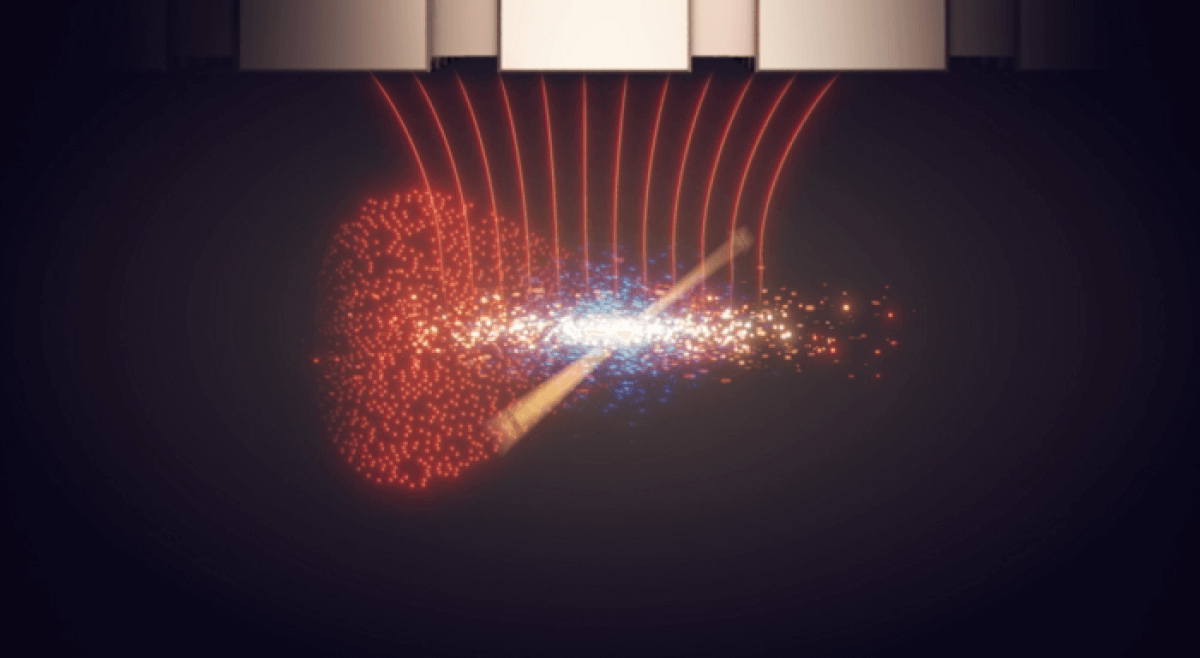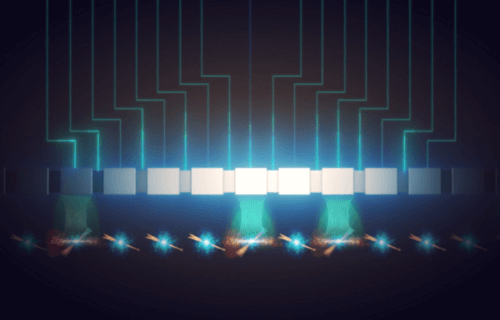SYDNEY, Australia — Australian engineers have stumbled across a new way to control electrons which play a key role in quantum computing. The breakthrough could open the door to making billion-qubit quantum computer chips a reality.
Here’s what you need to know about quantum computing:
- Computers use “bits” — binary digits (0s and 1s) to process information, but a quantum bit (qubit) exists in both states at the same time.
- Qubits allow computers to operate exponentially faster, performing countless computations simultaneously.
- Qubits are made up of “quantum dots,” tiny nano-sized devices that trap one or multiple electrons.
- Controlling the spin of these electrons is the key to making qubits work in an ultra-fast computer.
Researchers at the quantum computing start-up Diraq and UNSW Sydney discovered a completely new method of spin control which relies on an electrical field, instead of the typical magnetic field scientists use. The team wasn’t expecting the find this breakthrough, but its discovery could soon make it possible to build large-scale silicon quantum computers.
“This was a completely new effect we’d never seen before, which we didn’t quite understand at first,” says lead author Dr. Will Gilbert, a quantum processor engineer at Diraq, in a media release. “But it quickly became clear that this was a powerful new way of controlling spins in a quantum dot. And that was super exciting.”
How did the team make their quantum breakthrough?
In 2020, Dr. Tuomo Tanttu was experimenting with different combinations of nano-sized devices to control quantum dots, as well as tiny magnets and antennas which drive their operations. That’s when something strange happened.
“I was trying to really accurately operate a two-qubit gate, iterating through a lot of different devices, slightly different geometries, different materials stacks, and different control techniques,” recalls Dr. Tanttu, a measurement engineer at Diraq. “Then this strange peak popped up. It looked like the rate of rotation for one of the qubits was speeding up, which I’d never seen in four years of running these experiments.”
Later on, the engineers realized this could serve as a new way of manipulating the quantum state of individual qubits. Rather than using a magnetic fields however, this process took advantage of an electric field. Since the discovery, the team has been perfecting their unique quantum process. If they’re successful, it could allow Diraq to build a single computer chip which carries billions of qubits.

“This is a new way to manipulate qubits, and it’s less bulky to build – you don’t need to fabricate cobalt micro-magnets or an antenna right next to the qubits to generate the control effect,” Gilbert explains. “It removes the requirement of placing extra structures around each gate. So, there’s less clutter.”
The study authors call this new technique “intrinsic spin-orbit EDSR.” Currently, there are two established methods for controlling electrons without disturbing others nearby — a necessary step in creating a quantum computer in silicon.
One is electron spin resonance (ESR), which uses an on-chip microwave antenna. The other is electric dipole spin resonance (EDSR), which relies on an induced gradient magnetic field.
“Normally, we design our microwave antennas to deliver purely magnetic fields,” Dr. Tanttu says. “But this particular antenna design generated more of an electric field than we wanted – and that turned out to be lucky, because we discovered a new effect we can use to manipulate qubits. That’s serendipity for you.”

This could spark the next computer revolution
Study authors explain that complementary metal-oxide-semiconductor (CMOS) is the building process at the heart of all modern computers. It helps to create everything from microprocessors, microcontrollers, and memory chips to analogue circuits such as image sensors and data converters.
“This is a gem of new mechanism, which just adds to the trove of proprietary technology we’ve developed over the past 20 years of research,” says Prof. Andrew Dzurak, CEO and Founder of Diraq, and a Professor in Quantum Engineering at UNSW.
Prof. Dzurak led the team that built the first quantum logic gate in silicon back in 2015.
“It builds on our work to make quantum computing in silicon a reality, based on essentially the same semiconductor component technology as existing computer chips, rather than relying on exotic materials,” Dzurak adds. “Since it is based on the same CMOS technology as today’s computer industry, our approach will make it easier and faster to scale up for commercial production and achieve our goal of fabricating billions of qubits on a single chip.”
Scientists and engineers call successfully building a functional quantum computer the “space race of the 21st century.” Doing so could allow scientists to zoom through impossible calculations in the blink of an eye — possibly leading to new solutions that normal computers take years to reach.
“We often think of landing on the Moon as humanity’s greatest technological marvel,” Dzurak concludes. “But the truth is, today’s CMOS chips – with billions of operating devices integrated together to work like a symphony, and which you carry in your pocket – that’s an astounding technical achievement, and one that’s revolutionized modern life. Quantum computing will be equally astonishing.”
The study is published in the journal Nature Nanotechnology.


The future of humanity relies greatly on the world’s scientists. I greatly admire these tireless, and often unsung, researchers. They are the true heroes of humanity.